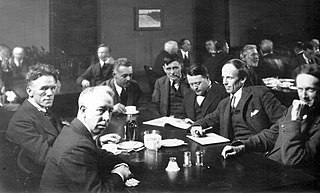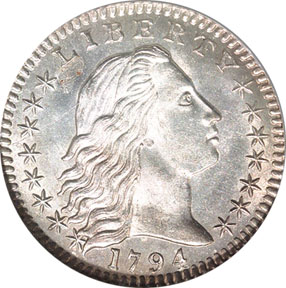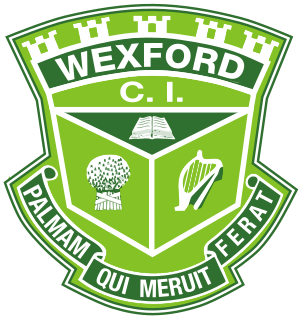Related Research Articles

The loonie, formally the Canadian one-dollar coin, is a gold-coloured Canadian coin that was introduced in 1987 and is produced by the Royal Canadian Mint at its facility in Winnipeg. The most prevalent versions of the coin show a common loon, a bird found throughout Canada, on the reverse and Queen Elizabeth II, the nation's head of state, on the obverse. Various commemorative and specimen-set editions of the coin with special designs replacing the loon on the reverse have been minted over the years.

The toonie, formally the Canadian two-dollar coin, was introduced on February 19, 1996, by Minister of Public Works Diane Marleau. As of 2022, it possesses the highest monetary value of any circulating Canadian coin. The toonie is a bi-metallic coin which on the reverse side bears an image of a polar bear by artist Brent Townsend. The obverse, like all other current Canadian circulation coins, has a portrait of Queen Elizabeth II. It has the words ELIZABETH II / D.G. REGINA in a different typeface from any other Canadian coin.

The Group of Seven, once known as the Algonquin School, was a group of Canadian landscape painters from 1920 to 1933, originally consisting of Franklin Carmichael (1890–1945), Lawren Harris (1885–1970), A. Y. Jackson (1882–1974), Frank Johnston (1888–1949), Arthur Lismer (1885–1969), J. E. H. MacDonald (1873–1932), and Frederick Varley (1881–1969). Later, A. J. Casson (1898–1992) was invited to join in 1926, Edwin Holgate (1892–1977) became a member in 1930, and LeMoine FitzGerald (1890–1956) joined in 1932.

The Royal Canadian Mint is the mint of Canada and a Crown corporation, operating under the Royal Canadian Mint Act. The shares of the Mint are held in trust for the Crown in right of Canada.

In Canada, a dime is a coin worth ten cents. It has been the physically smallest Canadian coin since 1922; it is smaller even than the penny, despite its higher face value. According to the Royal Canadian Mint, the official national term of the coin is the 10-cent piece, but in practice, the term dime predominates in English-speaking Canada. It is nearly identical in size to the American dime. Unlike its American counterpart, the Canadian dime is magnetic due to a distinct metal composition. From 1968 to 1999, it was composed entirely of nickel, and since 2000, it has consisted of a steel core with plating composed of layers of nickel and copper.

The half dime, or half disme, was a silver coin, valued at five cents, formerly minted in the United States.

Campbellford is an unincorporated place and former town in Northumberland County, Ontario, Canada, in the township municipality of Trent Hills. It lies approximately midway between Toronto and Ottawa. It is situated on both the Trent-Severn Waterway and the Trans Canada Trail. It can be reached from Highway 401 by exiting at Brighton and going north on County Road 30. It can also be reached from Highway 7 at the Havelock exit going south. Campbellford is surrounded by prime agricultural land which is home to many farms. In recent years, some of the town's agricultural sector has diversified into non-traditional areas such as bison farming, rare breeds farming and there are many horse farms in the area. The town has a farmers market that is open two days a week in the summer.

The quarter, short for quarter dollar, is a Canadian coin worth 25 cents or one-fourth of a Canadian dollar. It is a small, circular coin of silver colour. According to the Royal Canadian Mint, the official name for the coin is the 25-cent piece, but in practice it is usually called a "quarter", much like its American counterpart. In French, it is called a caribou or trente sous. The coin is produced at the Royal Canadian Mint's facility in Winnipeg, Manitoba.

In Canada, a penny is a coin worth one cent, or 1⁄100 of a dollar. According to the Royal Canadian Mint, the official national term for the coin is the "one-cent piece", but in practice the terms penny and cent predominate. Penny was likely readily adopted because the previous coinage in Canada was the British monetary system, where Canada used British pounds, shillings, and pence as coinage alongside U.S. decimal coins and Spanish milled dollars.

This glossary of numismatics is a list of definitions of terms and concepts relevant to numismatics and coin collecting, as well as sub-fields and related disciplines, with concise explanations for the beginner or professional.
The coins of Canada are produced by the Royal Canadian Mint and denominated in Canadian dollars ($) and the subunit of dollars, cents (¢). An effigy of the reigning monarch always appears on the obverse of all coins. There are standard images which appear on the reverse, but there are also commemorative and numismatic issues with different images on the reverse.

The 5 euro cent coin (€0.05) has a value of one twentieth of a euro and is composed of copper-covered steel. All coins have a common reverse and country-specific (national) obverse. The coin has been used since 2002 and was not re-designed in 2007 as was the case with the higher-value coins.

Wexford Collegiate School for the Arts, formerly and still known as Wexford Collegiate Institute (WCI) and initially known as Northwest Collegiate Institute is a public high school located in the Scarborough district of Toronto, Ontario, Canada. Run and organized by the Toronto District School Board, the school officially opened to students in September 1965 by the Scarborough Board of Education and was renamed Wexford Collegiate School for the Arts in 2006 in recognition of its specialized arts programs.
Coins of the Australian dollar were introduced on 14 February 1966, although they did not at that time include the one-dollar or two-dollar coins. The dollar was equivalent in value to 10 shillings in the former currency.
Scenes of Canada is the fourth series of banknotes of the Canadian dollar issued by the Bank of Canada. It was first circulated in 1970 to succeed the 1954 Canadian Landscape series and was followed by the 1986 Birds of Canada banknote series. This was the last series to feature a $1 bill, which was replaced by a $1 coin known as the loonie in 1987, although both the $1 bill and the loonie were produced concurrently for 21 months, from June 1987 to April 1989.

Ernest Townsend was a portrait artist from Derby in England.

The Big Maple Leaf (BML) is a $1 million (CAD) gold coin weighing 100 kilograms (220 lb). A set of six of these coins was produced by the Royal Canadian Mint (RCM) in 2007, at their Ottawa facility where the first BML produced remains in storage. As of March 2017, the market value of a single Big Maple Leaf had reached approximately $4 million (USD). On 27 March 2017, one of the coins was stolen from a Berlin museum.
The Canadian Screen Award for Best Cinematography in a Documentary is an annual award, presented as part of the Canadian Screen Awards program to honour the year's best cinematography in a documentary film. It is presented separately from the Canadian Screen Award for Best Cinematography for feature films.
The Canadian Screen Award for Best Editing in a Documentary is an annual award, presented as part of the Canadian Screen Awards program to honour the year's best editing in a documentary film. It is presented separately from the Canadian Screen Award for Best Editing for narrative feature films.
21 Black Futures is a Canadian film and theatre project, broadcast by CBC Gem in 2021. Created in conjunction with the Black Canadian theatre company Obsidian Theatre to mark both Black History Month and the 21st anniversary of Obsidian, the project commissioned 21 short film adaptations of theatrical monologues on the theme of "the future of Blackness" by Black Canadian writers, each performed by a Black actor on the stage of Meridian Hall in Toronto.
References
- ↑ "$2 Circulation Coin". Royal Canadian Mint.
It was designed by wildlife and landscape artist Brent Townsend